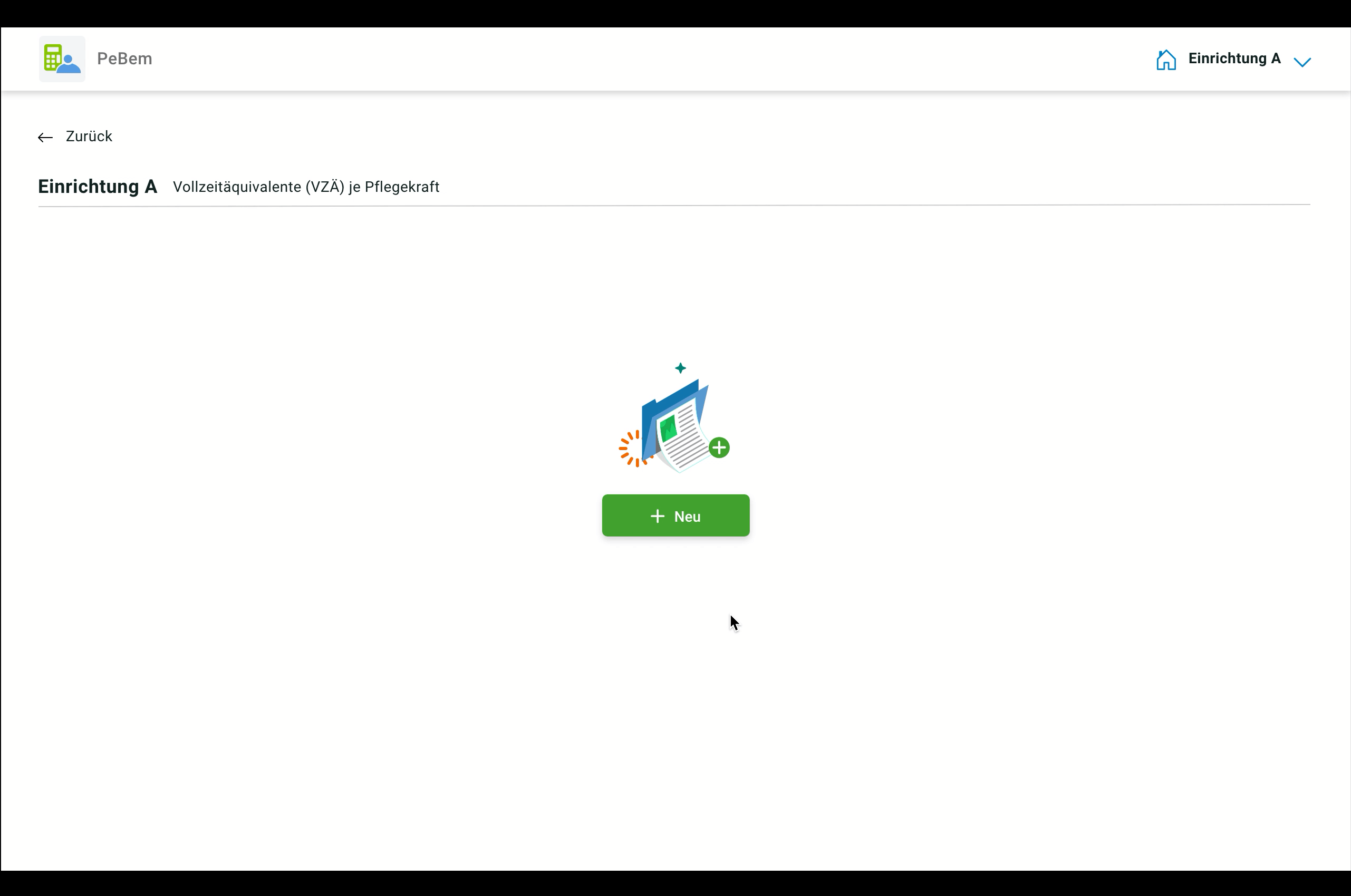top of page
Enabling HR in Facilities with a tailored tool to assess staff numbers.
Project Overview
Pebem is a digital tool for calculating staff allocation in nursing facilities.
Team
I worked with one product owner, internal team of seven software developers.
Company

Medium
Desktop / Tablet Webbased App.

Background
On 1 July 2023, as per new guidelines, the worker quota in Care
in Germany was replaced by a new staffing ratio (PeBeM).
The core problem
The basic staff assessment tool was already available online, but several challenges needed to be addressed:
Cost-Effective Development
Development had to be cost-effective, using existing patterns to save resources and time.
Adapting to Customer Needs
Allowed customers to tailor staff evaluation to industry standards and organisational needs.
Short time to market
Nurses handle tasks beyond their expertise.
The existing tool

The solution
To solve this, we designed a customised planning tool that integrates seamlessly with the company’s existing software.
Effortless UI Integration
Used familiar UI components
for consistency and minimal design effort.
Seamless Data Integration
Automated real-time staff performance and assessment data entry.
Fast Deployment
Quickly implemented into the existing product portfolio for added value.

Simplifying the Calculation Table
How might we make this calculation table in a compact format so that HR staff can easily understand and use it efficiently?
Example of calculation

Layout option


The vertical layout lets HR staff quickly view, compare, calculate, and summarise information.
I used proximity a key design principle to facilitate information processing.
Design decision 1- Altered Layout due to new requirment
The subject specialist and PM added new Legal requirements which made the tool more dynamic. The customers are situated everywhere in Germany, hence the reference value changes as per their respective states (e.g NRW, Bayern etc.).

The reference value
must be selected
The federal values
has been given
The number of residents
has been transferred
The contract value
can be added manually
by choosing between
This layout no longer worked because the HR employee has to constantly switch between tabs to view or compare summaries between QN levels, which can add cognitive load to her/him and waste a lot of time.
1A
1B
Design decision 3- Leveraging Pre-existing Patterns
I found an existing pattern in other software, which made sense to use for this table


Summary of contract value will be shown at the top to keep user
inform without scrolling down
the whole page.
Accordions have been implemented instead of tabs, to see all the calculation in one scroll, which will make the process faster and intuitive.


Trade off-Decisions
Unavailable state values should be visually indicated in the selection list to help HR make informed choices

Suggestion
In the selection list, the deactive status of cities indicates that values are not available.
Developed

The suggested component was unavailable in the library, so instead of developing it and spending more time on it, the developers came up with this solution themselves.
Final Userflow
Start new calculation
Select state value
Input contract value and save the calculation

Save it
Each project comes with unique challenges, and user testing isn't always available for validation. In such cases, we design a solution based on best practices and assumptions, then refine it based on customer feedback.
Lesson learnt
bottom of page
